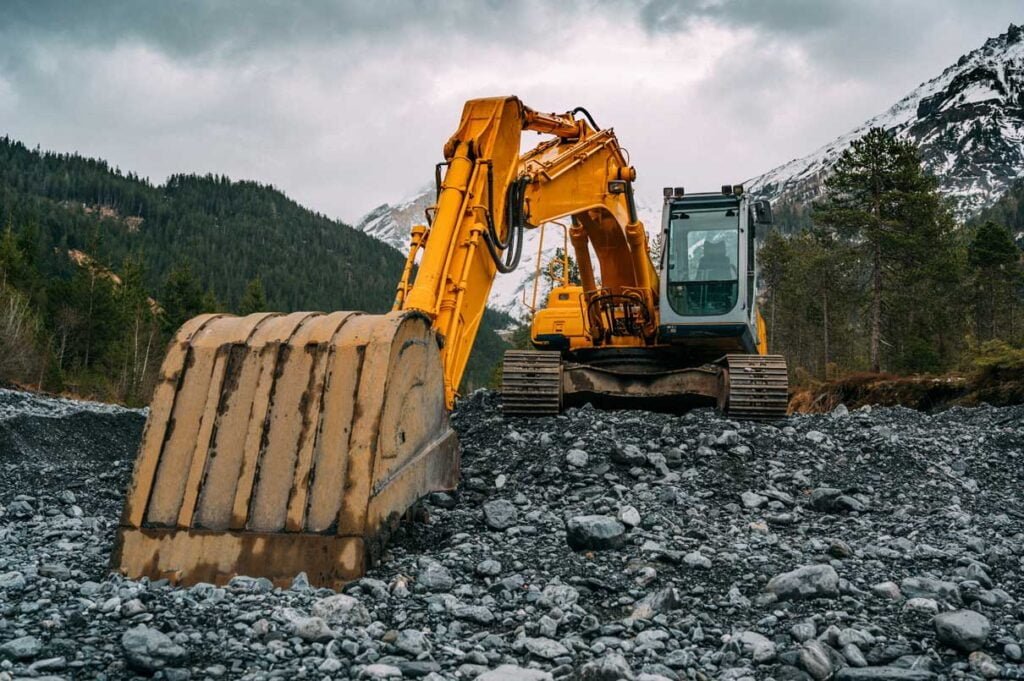Introduction

You will never believe these bizarre truth of accurate excavators!Excavators are indispensable heavy construction equipment used extensively in the excavation industry. When it comes to excavators, accuracy is paramount. Inaccurate excavators can cause significant delays and cost overruns in construction projects. However, most people are unaware of the bizarre truth about these supposedly “accurate” excavators and the underlying technology that makes them tick. This article will explore some unbelievable facts about accurate excavators that will make you think twice.
So what exactly makes an excavator accurate? There are a few key precision factors:
What Makes An Excavator “Accurate“?
- GPS Systems – Most modern accurate excavators use high-precision GPS positioning to consistently achieve accuracy down to 15mm. Operators can see real-time measurements on screens.
- Laser Guidance – Rotating lasers send signals showing the operator how far they are from the desired grade level, enabling precision digging.
- Tilt Sensors – These measure tiny deviations from the horizontal plane and enable minute adjustments.
- Angle Sensors – These track the precise angle of the boom, bucket, and dipper at all times for accuracy.
- Inertial Guidance Sensors – By tracking machine acceleration and rotations, these correct GPS data for increased precision even when satellite connectivity is briefly lost.
As you can see, accurate excavators utilize an array of advanced sensors and technology for unmatched digging precision. But some little-known facts about them will make you doubt just how “accurate” they are.
Bizarre Truth #1: Still Prone to Human Error

Would you believe it if I told you that even after so many advanced tech systems, accurate excavators are still vulnerable to human error? It’s true. Any accidental bumps or nudges by staff can knock sensitive calibration out of whack. A slight 2° tilt of the main cabin is enough to skew readings. Recalibration then takes hours! So accuracy fully depends on the care and competence of machine operators. Always get professionally trained staff!
Table 1: Common Human Errors Affecting Excavator Accuracy
| Type of Error | Impact |
|---|---|
| Cabin Tilting | Alters grade sensor measurements |
| Rough Machine Handling | Misaligns/damages laser equipment |
| GPS Antenna Damage | Interrupts satellite signal |
| Mishandling Receiver | Corrupts control unit alignment |
Bizarre Truth #2: Tricky Geological Factors
You’d presume advanced sensors would easily overcome any geological challenges underground. Wrong! Complex soil conditions actually diminish excavator digging accuracy substantially due to equipment limitations. For example, accuracy drops by 50% in mixed-grain soils containing stray boulders or high clay content. Dense, compacted layers also impede sensors. And large underground voids can shift bucket positions unexpectedly. So don’t blindly trust those specs – ground complexity impacts precision!
Bizarre Truth #3: Over-reliance on GPS
While GPS is invaluable for accurate excavators, over-dependency poses issues. Why? Satellite signals can’t penetrate solid objects like thick vegetation or structures. Urban sites with many buildings cause constant signal blockage, leaving systems struggling to sync positions accurately. Plus, solar flares and space weather can wholly disrupt satellite networks, rendering GPS guidance ineffective. Always have secondary optical laser systems as backup!
Bizarre Truth #4: Susceptibility to Calamities
You’d presume complex machinery like accurate excavators would be calibrated to withstand every kind of environmental disruption. Unfortunately, that’s not quite true. While these machines have waterproofing, they remain prone to electrical failures and rust corrosion issues when exposed to floods, storms or prolonged rain. Blizzards freeze up rotating laser bases. High winds have toppled entire rigs, throwing off factory-settings completely! So don’t operate them in volatile weather or disasters!
Bizarre Truth #5: Ongoing Maintenance Hassles
Given all those sensors and antennas, maintaining calibration in accurate excavators is super tedious. Laser receivers get knocked out of alignment easily so technicians must check them continually. Severe operating temperatures degrade sensor consistency. Accumulated dirt near antennas hinders signal accuracy over time too. And with so many interconnected electronic components, chances of failures and glitches increase exponentially. So accuracy comes at a high maintenance cost!
Accurate Excavators – Table Summary
Here’s a quick table summarizing the bizarre truths about supposedly accurate excavators we just covered:
| Bizarre Truth | Impact on Accuracy |
|---|---|
| Human Error Prone | Carelessness reduces precision |
| Tricky Geology | Soil complexity hinders sensors |
| Over-reliance on GPS | Satellite connectivity failures |
| Calamity Susceptibility | Disasters skew factory calibrations |
| High Maintenance | Glitchy components need continual checks |
FAQ:accurate excavators
Here are some common questions about bizarre truths related to accurate excavators:
Q: Can accurate excavators operate reliably in harsh environments?
A: Not quite – they still remain vulnerable to electrical/mechanical issues when exposed to extreme weather, disasters etc which affects accuracy.
Q: Do these high-tech excavators really achieve superior precision compared to conventional models?
A: Yes, the advanced positioning systems in accurate excavators enhance digging precision substantially when conditions are ideal. But certain limiting factors can still hinder full accuracy potential.
Q: What maintenance aspects typically trouble accurate excavators the most?
A: The laser sensors, antennas and electrical wiring in accurate excavators demand extensive daily upkeep to avoid miscalibration issues that diminish accuracy over time.
Conclusion
In closing, advanced technologies have undoubtedly made modern accurate excavators vastly more precise in their digging capabilities compared to older models. However, there remain some bizarre truths about their actual real-world accuracy being hampered by factors like human errors, site conditions, over-reliance on satellites and more.
So while instrumentation and software algorithms driving these machines continue becoming more advanced, excavation contractors must remember that guaranteed pinpoint accuracy still has some limitations in the field. Proper operation practices, ideal site geology, backupmonitoring tools and robust maintenance are equally vital considerations for accuracy.

